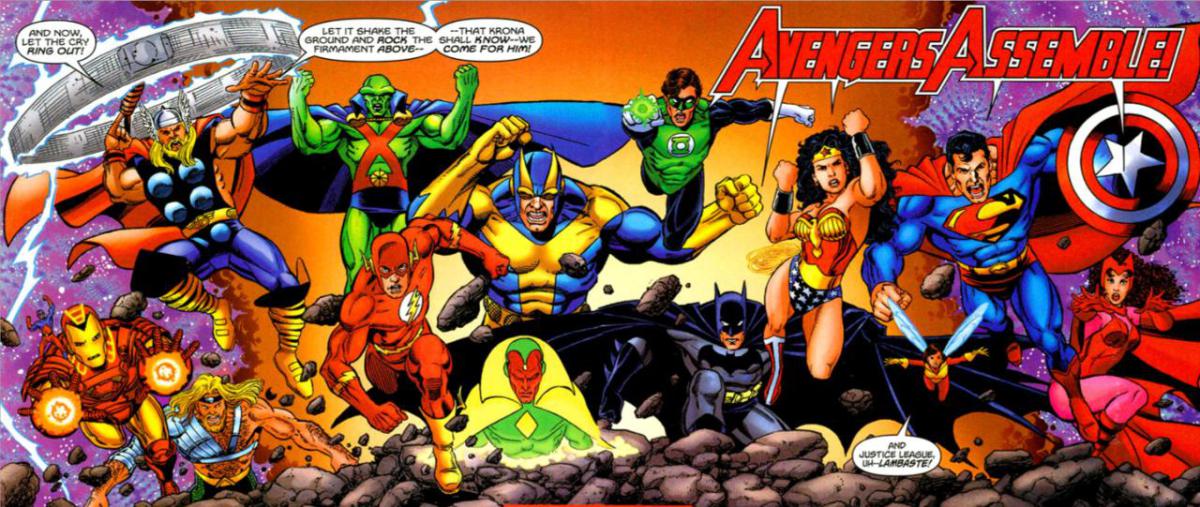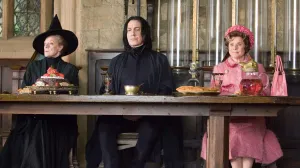It’s hard to believe, but we’re already halfway through 2015. And in case you didn’t notice, it has been a big year in the world of comics. Announcements have been flooding the internet over the past few weeks with Valiant Summit, Image Expo, and Marvel’s post-Secret Wars lineup all announced in only a few days. On top of all that San Diego Comic is merely days away. With so much happening, it’s worth stepping back from the madness for a moment, taking a deep breath, and assessing where comics may be going after a very busy six months.
Videos by ComicBook.com
The Big Two
Technically, you can talk about the North American comics industry without mentioning Marvel and DC Comics. It’d just be an exercise in futility. While other publishers have seen rapid growth recently (more on that to come), these two still comprise more than half the industry, and can send shockwaves through comics with relatively little effort.
Perhaps the biggest change coming from both companies is their renewed interest inrelaunches, with Marvel specifically acknowledging a seasonal publishing model moving forward. Series will run for a year or more before getting new team and new #1 issues. The company had already been using this sort of structure for many series, and it will only become more common.
DC Comics just relaunched their entire line under the “Divergence” banner with a near equal mix of #1 issues and continuing series with new directions. While the company hasn’t openly acknowledged this to be an ongoing plan, their current publishing structure is very similar to Marvel’s over the past few years. These sorts of relaunches have been met by diminishing returns to the normally high order numbers on first issues. However, they provide a consistent series of jumping on points for new readers, which seems to be the target of these initiatives.
That increased focus on discovering the ever illusive new reader has also led to a more diverse set of comics. Divergence shows a similar mix to the comics that preceded them, but with some stand out new title’s like Midnighter which prominently features a gay man and his romantic relationships. Marvel’s post-Secret Wars lineup shows an increased diversity in both gender and race. Despite the promotion of diversity as an important theme in All-New, All-Different Marvel, their remains a lack of it amongst writers and artists the company hires to write these titles.
Both of the Big Two are pursuing new readers, but this year has also shown that neither ought to fear losing market share anytime soon. The massive debut of Marvel’s Star Wars line has shown that franchises and existing IP are still the biggest driver of sales to comic book stores in America. Star Wars, Darth Vader, and Princess Leia have all remained in the top ten of Diamond’s sales charts after three or more issues each. These publisher’s biggest strengths lie in the characters they own.
The Challengers
Marvel and DC may rake the most units and dollars, the real action in comics is happening elsewhere. Image Comics and Valiant Entertainment both held events in San Diego this week to roll out their future plans. And as-per usual, each publisher looks to disrupt the market. Image and Valiant have both been defined by the quality of their comics and treatment of creators. Image’s focus has remained on creator ownership and a diverse line of comics that has led to some of the most fascinating new comics of 2015, including Injection, Descender, and Starve. On the other coast, Valiant has recruited some of the best creators working today and rewarded them for charting quality direction for their characters. Both publishers are extraordinarily proud of what they are producing, and have enjoyed continuing sales growth as a result (more so Image than Valiant).
This has led to some major Hollywood deals. Kelly Sue DeConnick and Matt Fraction are in the process of developing multiple Image series for television, including Sex Criminals and The Wicked + The Divine. Jason Latour and Jason Aaron’s Southern Bastards is also in development at FX. Valiant has struck a deal with Sony to develop their properties into a new superhero franchise, beginning with a five-picture deal to adapt Harbinger, Bloodshot, and the Harbinger Wars event. These deals not only bring cash to publishers, but an increased profile to the comics that will be adapted.
Oni Press and Boom! Studios are both publishers to keep an eye on as well. They are actively pursuing a wide variety of new pitches and expanding the variety of their offerings. Boom’s growing Kaboom line, including comics like Lumberjanes and Save Us Great Warrior, has helped create a group of high quality, all ages comics and making the medium more friendly for children and families.
Small Press Strong
Whatever happens with Diamond numbers and Hollywood deals, there’s no doubt that the independent comics scene will stay strong. The past few years have seen small press comics continue to grow as a community with a variety of successes. Top Shelf’s acquisition by IDW at the beginning of the year has provided the eclectic publisher’s line with greater resources to market and sell their beautiful line of comics. Small press-focused conventions like Small Press Expo in Baltimore and Comic Arts Brooklyn both saw growth in events last fall and preparing for more successful weekends in only a few months.
Black Mask Studios has made a big splash this spring and summer. They’re homegrown sales model for both print and digital comics has led to great critical success for series like We Can Never Go Home. Word of mouth has helped to quickly spread word of Black Mask’s excellent lineup and led to multiple reprints. Hand published series like COPRA have also experienced an increased profile and the initial collected editions to be published by Bergen Street Comics.
Comixology Submit has seen a consistent increase in its number of titles throughout 2015. The digital outlet for independent comics has made it easier than ever for creators to publish their work and reach a growing audience.
Bytes and Bytes of Comics
That growing audience comes from the acceptance of digital comics as an alternative to printed versions. Amazon’s acquisition of Comixology in 2014 did not hurt the company. Rather it appears to have only increased both its selection and audience. The addition of Dark Horse collections in June removes the last significant holdout of the Comixology store. comiXology has reported increased digital sales in 2015, although sales numbers are not released by the distributor.
Rumors have also begun to swirl about comiXology offering a subscription plan in the future, similar to Amazon’s “all you can eat” subscriptions for select books, movies, and television. This model already exists in the Marvel Unlimited app, and has been embraced by both casual and more serious comics readers to explore the medium.
The Rising Tide
The acceptance and success of digital comics storefronts like comiXology also appears to have benefited the industry as a whole in North America. Comichron’s John Jackson Miller and ICv2’s Milton Griepp just released a combined study of comics sales in 2014 here. It’s a fascinating read that you should absolutely check out. Together they have circumvented the typical limits represented by Diamond’s very faulty sales data, and given us a picture of where comics are heading in 2015. That starts with the benefit of digital comics. “Digital appears to be complementing, rather than cannibalizing, print” Miller said.
2014 was the largest sales year in two decades since the comics speculation bubble broke in the early 1990s. A quick review of 2015 sales numbers, including both the growth of Image Comics and gangbuster sales on titles like Star Wars and Secret Wars makes it clear that the current year is on track to break that record again. Comic stores saw some of the weakest growth in 2014 with a 4% increase. However, the overall numbers were boosted by an 11% increase in digital download sales and 16% increase in book markets.
Downloads and standard book sellers represent a more accessible retail outlet for the medium as well, indicating greater interest from new readers unfamiliar with comic stores. While digital retailers and book stores may be seeing larger increases in sales, 4% is still nothing to scoff at. Growth is being shared between all these outlets, seemingly the success of one benefits all. It is a clear example of a rising tide that raises all boats.
Whether it’s Hollywood boosting the profile of Marvel and DC, Image and Valiant increasing their market share, Black Mask’s recent success, or the growth of comiXology, each of these things appears to be benefiting comics as a whole. 2015 has shown increases in sales among all sizes of publication with strategies and ideas targeted at an increasingly diverse market. Many publishers and distributors have been met with great success this year, and there are no clear losers as a result of their gains. Comics are gaining popularity, and we all look to be winners.












